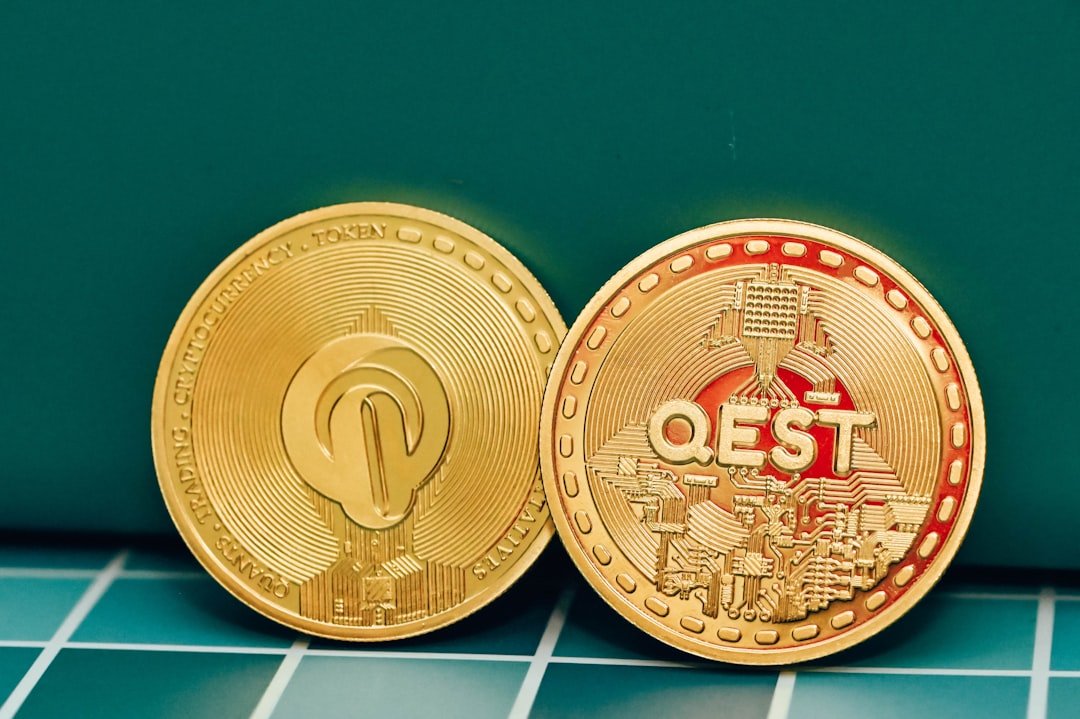Now Reading: Fallout 76: Redemption Story
-
01
Fallout 76: Redemption Story
Fallout 76: Redemption Story

When I think back to the launch of the game, I can’t help but feel a mix of disappointment and disbelief. The anticipation had been building for months, fueled by trailers that promised an immersive experience and groundbreaking mechanics. However, when the day finally arrived, it quickly became apparent that the reality fell far short of expectations.
Players, including myself, were met with a myriad of technical glitches, crashes, and gameplay issues that rendered the experience frustrating at best. It was as if the game had been released half-baked, leaving many of us feeling cheated after investing our time and money. The initial excitement turned into a wave of frustration as I navigated through the game’s numerous bugs.
Characters would freeze mid-animation, quests would become uncompletable due to glitches, and the graphics often looked subpar compared to what had been showcased in promotional materials. I remember scrolling through forums and social media, where players shared their own horror stories of crashes and bugs. It was disheartening to see a community that had once been so excited now united in disappointment.
The launch, which should have been a celebration, felt more like a funeral for what could have been a great game.
Key Takeaways
- The troubled launch of the game led to a significant community backlash
- The developer’s response to the technical issues was crucial in overcoming them
- Expanding content and improving gameplay experience were key in rebuilding trust with players
- Reconnecting with the fanbase and embracing player feedback were essential in rebuilding the game’s reputation
- Looking towards the future, the focus is on rebuilding trust and delivering a better gaming experience
Community Backlash
As the days passed following the launch, the backlash from the community grew louder and more intense. I found myself immersed in discussions across various platforms, where players expressed their outrage and frustration. The hashtags trending on Twitter were filled with calls for refunds and demands for accountability from the developers.
It was clear that the community felt betrayed; we had invested our hopes in this game, only to be met with a product that seemed unfinished and unpolished. The sense of camaraderie among players was palpable as we rallied together to voice our concerns. The backlash wasn’t just limited to social media; it spilled over into reviews and ratings on gaming platforms.
I watched as the game’s score plummeted, reflecting the collective disappointment of players who felt misled. It was a stark reminder of how powerful community sentiment can be in the gaming industry. As someone who had eagerly awaited this release, I felt a sense of solidarity with my fellow gamers.
We were all in this together, sharing our frustrations and hoping for change.
Developer Response

In the face of mounting criticism, the developers finally issued a response that aimed to address the concerns raised by the community. I remember reading their statement with a mix of skepticism and hope. They acknowledged the issues we were facing and promised to work diligently on patches and updates to rectify the problems.
It was a step in the right direction, but I couldn’t help but wonder if their words would translate into meaningful action. The gaming community has seen many empty promises before, and trust was in short supply. As time went on, I observed that the developers began to engage more directly with players. They held Q&A sessions on forums and social media platforms, allowing us to voice our concerns and ask questions about their plans moving forward. This level of transparency was refreshing, and I found myself cautiously optimistic about their commitment to improving the game.
However, I also knew that actions speak louder than words; we needed to see tangible results to believe that they were genuinely invested in making things right.
Overcoming Technical Issues
The developers’ commitment to addressing technical issues became evident as they rolled out a series of patches aimed at fixing the most pressing problems. I eagerly downloaded each update, hoping that it would bring about significant improvements. With each patch, I noticed gradual enhancements in performance; crashes became less frequent, and many of the game-breaking bugs were resolved.
It was a relief to finally experience gameplay that felt smoother and more enjoyable. However, overcoming technical issues was not just about fixing bugs; it also involved optimizing gameplay mechanics and enhancing overall performance. I found myself appreciating the developers’ efforts as they continued to refine the game based on player feedback.
They introduced quality-of-life improvements that made navigation easier and streamlined quest progression. While it took time, I could see that they were genuinely working towards creating a better experience for players like me.
Expanding Content
As the technical issues began to subside, I noticed that the developers shifted their focus towards expanding content within the game. They released new updates that included additional quests, characters, and even new gameplay modes. This influx of content reinvigorated my interest in the game and reminded me of what had initially drawn me in.
I found myself diving back into the world with renewed enthusiasm, eager to explore all that had been added since launch. The expansion of content also served as a way for the developers to demonstrate their commitment to long-term support for the game. They listened to player requests for new features and incorporated them into updates, which made me feel valued as a member of the community.
The introduction of seasonal events and limited-time challenges added an exciting layer of engagement that kept players coming back for more.
Improved Gameplay Experience

Combat and Visuals
Combat felt more fluid, character animations were smoother, and environments were richer in detail than ever before. It was as if the game had undergone a transformation from its troubled launch state into something truly enjoyable.
Storytelling and Character Development
Moreover, the improvements extended beyond just technical aspects; they also enriched storytelling elements within the game. New narrative arcs were introduced that deepened character development and added layers of complexity to the plot. I found myself becoming more invested in the characters’ stories as they unfolded in ways I hadn’t anticipated.
A Renewed Appreciation
This renewed focus on storytelling made me appreciate the game on a whole new level, reminding me why I had been excited about it in the first place.
Building Trust with Players
As I continued to engage with the game post-launch, I noticed a gradual shift in how players viewed the developers’ efforts. Trust was slowly being rebuilt through consistent communication and tangible improvements. The developers made it a point to keep us informed about upcoming changes and updates through regular blog posts and social media announcements.
This transparency fostered a sense of partnership between them and the player community, which was crucial for restoring faith after such a rocky start. I found myself feeling more optimistic about the future of the game as trust began to grow. The developers’ willingness to listen to feedback and make necessary adjustments demonstrated their commitment to creating an enjoyable experience for players like me.
It was refreshing to see a company take responsibility for its missteps and actively work towards regaining our trust rather than ignoring our concerns or becoming defensive.
Reconnecting with the Fanbase
As trust began to rebuild, I noticed an effort from the developers to reconnect with their fanbase on a deeper level. They organized community events, such as live streams where players could interact with developers directly and share their thoughts on recent updates. These initiatives created an opportunity for us to feel heard and valued as part of the gaming community.
It was heartening to see developers engaging with us rather than viewing us solely as consumers. Additionally, they launched initiatives aimed at celebrating player creativity through contests and showcases of fan art or gameplay highlights. This not only fostered a sense of community but also allowed players like me to feel more connected to one another as we shared our experiences within the game world.
It was clear that the developers were making an effort not just to fix their mistakes but also to cultivate a thriving community around their game.
Embracing Player Feedback
One of the most significant changes I observed during this recovery process was how seriously the developers began to embrace player feedback. They actively sought input from players through surveys and forums, asking us what features we wanted to see improved or added in future updates. This level of engagement made me feel like my voice mattered; it was empowering to know that my opinions could influence the direction of the game.
The developers took this feedback seriously, implementing changes based on what we expressed during discussions. Whether it was adjusting difficulty levels or refining gameplay mechanics, it became evident that they were committed to creating an experience tailored to player preferences. This responsiveness not only improved gameplay but also strengthened our bond with them as we felt like partners in shaping the future of the game.
Rebuilding the Reputation
As time went on and improvements continued to roll out, I witnessed a remarkable transformation in how both players and critics viewed the game. What had once been labeled a disaster at launch began to earn praise for its recovery efforts and ongoing support from developers. Reviews started reflecting this positive shift as more players returned to share their experiences after updates had addressed many initial concerns.
The rebuilding of reputation wasn’t just about fixing bugs; it was also about demonstrating genuine care for players’ experiences over time. The developers’ commitment to transparency and engagement helped shift perceptions from skepticism back towards optimism. As someone who had initially felt disillusioned by the launch, it was gratifying to see how far things had come since those early days.
Looking towards the Future
Reflecting on this journey from troubled launch to renewed hope fills me with excitement for what lies ahead for both myself as a player and for the game itself. The developers have shown resilience in overcoming challenges while actively working towards creating an enjoyable experience for all players involved. Their commitment gives me confidence that they will continue striving for excellence moving forward.
As I look towards future updates and expansions planned by developers, I feel optimistic about exploring new content while enjoying improved gameplay mechanics along with fellow gamers who have shared this journey with me. The lessons learned from this experience serve as reminders not only about accountability within gaming but also about how communities can come together during difficult times—ultimately leading us toward brighter horizons ahead!
If you’re interested in exploring the world of gaming beyond Fallout 76, you might want to check out this article on the best video game fan theories here. It delves into the fascinating and sometimes mind-blowing theories that fans have come up with for their favorite games. Who knows, you might discover a new perspective on a game you thought you knew inside and out.
FAQs
What is Fallout 76?
Fallout 76 is an online multiplayer action role-playing game developed by Bethesda Game Studios. It is part of the Fallout series and was released in 2018.
How did Fallout 76 initially receive criticism?
Fallout 76 received criticism at launch for technical issues, lack of engaging content, and a perceived departure from the single-player experience that the series was known for.
What changes did Fallout 76 make to redeem itself?
Fallout 76 made significant updates and improvements to the game, including adding new content, fixing technical issues, and introducing features to enhance the multiplayer experience.
What new content was added to Fallout 76?
New content added to Fallout 76 included new quests, events, items, and features such as player vending and a battle royale mode called Nuclear Winter.
How did Fallout 76 improve its technical issues?
Fallout 76 improved technical issues through patches and updates that addressed bugs, glitches, and performance issues that were present at launch.
How did Fallout 76 enhance the multiplayer experience?
Fallout 76 enhanced the multiplayer experience by adding features such as player vending, a faction-based PvP system, and the Nuclear Winter battle royale mode.
What was the reception of Fallout 76 after its redemption?
After its redemption, Fallout 76 received more positive reviews and feedback from players who appreciated the improvements and new content added to the game.



























